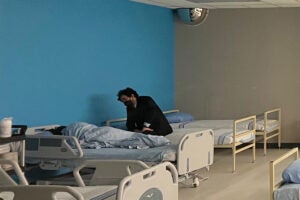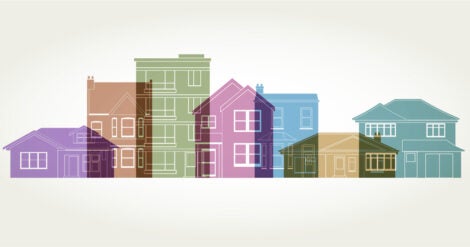Houston: A unified housing approach
Houston has offered one of the biggest success stories in dealing with homelessness, decreasing the number of unhoused people in the city by more than 60 percent over the past decade by housing more than 28,000 people. It’s done that by pursuing a “unified housing approach,” coordinating with more than 100 entities under the leadership of the nonprofit Coalition for the Homeless of Houston/Harris County. The city adopted a “housing first” approach, focusing on the most vulnerable populations—those struggling with severe mental or substance abuse issues. “Our experience is that most of these folks stabilize in housing with the appropriate level of services,” wrote mayoral aide Marc Eichenbaum and Coalition president and CEO Michael Nichols in a CNN op-ed. The effort provides a home with a key, a lease in a person’s name, and a rent subsidy so residents don’t pay more than 30 percent of their income, along with wraparound support including mental health and substance abuse counseling, health care, and job training. In the Coalition’s latest report, 90 percent of participants stayed in housing for two years. In 2020 the city and county invested $65 million in a COVID housing program and last year invested $100 million more with the goal of housing another 7,000 people by 2024. “We believe our most difficult issues, including homelessness, are solvable,” Eichenbaum and Nichols wrote. “Our approach to tackling this seemingly intractable problem can serve as a guide to other American cities seeking to address growing homeless populations.”
Boston: Health care for the homeless
Jim O’Connell started Boston Health Care for the Homeless Program in 1985, working with an outreach van and a vision for coordinating primary care with mental health and substance abuse issues in clinics throughout the city. Every doctor or nurse who works with the program is credentialed at area hospitals with admitting privileges, so they can address a patient’s immediate needs. Since 1996, their first electronic medical records system for homeless people has helped track patients no matter where they receive care in 80 different sites around Boston. In addition, a respite program provides more than 100 beds with on-call medical care as a secure place for unhoused people to recover outside of a hospital setting. The organization, which cares for more than 11,000 individuals annually, also offers supportive home health care by peer specialists with lived experiences of homelessness who can provide counseling and answer questions for those who have been newly housed. Since launching four decades ago, the institution has served as a model for dozens of other health care for the homeless organizations across the country.
Toronto: Building supportive housing

At the beginning of the pandemic, city officials and health care leaders across Toronto came together to create a COVID recovery hotel to house and care for hundreds of people experiencing homelessness. It was so successful, advocates across the city looked to ways to build on the lessons as the pandemic waned. “It showed us we need to be thinking more upstream to build more permanent housing for people who have been surviving homelessness,” says Boozary of the Gattuso Centre for Social Medicine at the University Health Network (UHN). The Centre led an effort to create that housing on land owned by UHN—a parking lot at one of its centers. UHN leased the land to the city, which then used federal and provincial dollars to develop a four-story building with 51 affordable units for people with housing instability and chronic medical issues. Community partners will provide services, supported with funds from provincial and city governments, while UHN will provide health care. Recently, the city announced a plan to create an additional 400 supportive and affordable homes in Toronto. In a separate effort last December, the UHN Gattuso Centre opened a facility for unhoused people experiencing substance issues, providing a safe place to recover with on-call medical supports and referrals to other services. Previously, emergency medical technicians had to stay with patients while waiting for an emergency bed to open up, which could take several hours—now drop-offs at the center happen almost instantaneously.
Veteran’s Administration: Tracking housing insecurity
Across the country, homelessness among military veterans has fallen by half since 2009, following dedicated investments and strategies including a “housing first” model providing permanent supportive housing. The VA hospital system has included housing insecurity as one of the issues it tracks for patients upon admission. “In addition to tracking vital signs such as blood pressure and pulse when a patient comes in for a visit, clinicians routinely ask about housing status,” says Harvard Chan School’s Koh, who has established a research collaboration between the School’s Homelessness Initiative and the VA. For those experiencing difficulties, the VA has implemented the HUD-Veterans Affairs Supportive Housing program to provide housing assistance vouchers. The agency has expanded the number of vouchers from 10,000 in 2008 to almost 110,000 by 2022. In addition to rental assistance, the program provides support for veterans with substance use disorders and mental health issues. Another program helps connect veterans dealing with housing issues to nonprofits that can provide transportation, legal support, and childcare, often in rural areas where these services are harder to come by.
images: smartboy10 / iStock, courtesy of Andrew Boozary
